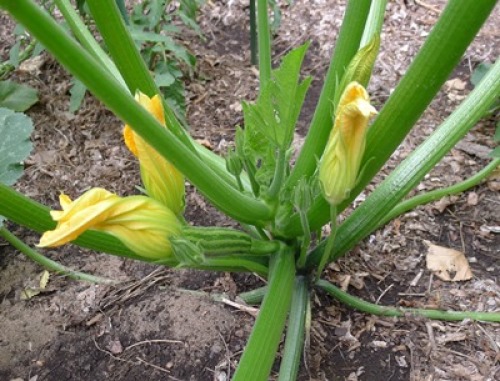
I’ve heard from many gardeners over the years when their zucchini plants drop their blossoms before setting fruit or when the new fruit dries up. It’s alarming, but it’s not unusual. Many plants drop their blossoms, but because zucchini blossoms are so large, they’re more noticeable.
Blossoms drop differently, depending on whether they’re a male or female flower. Male flowers drop when they shed their pollen; female flowers drop if they’re not pollinated.
Early in the season, zucchini (and other plants like cucumbers) may produce a dozen or more blooms, but these are usually the male flowers, the ones with the pollen, Without female flowers, there isn’t a need for the pollen.
Sometimes female flowers bloom before the male flowers, so there’s no pollen available. Without pollination, the female flowers will dry up and fall off.
Weather plays a role in pollination, too. If the weather isn’t dry and warm enough, bees might not be around to help move pollen from the male flowers to the female flowers. Other reasons for plants dropping their blossoms include too little or too much water and poor soil conditions.
Have you noticed poor fruit set on your zucchini plants? If so, you may need to start pollinating by hand. Here’s how:
- Start early in the morning when pollen is available. Locate freshly opened male and female flowers. (Male flowers are the ones with short stems; female flowers are the ones with longer stems and a zucchini fruit shape at their base.)
- Clip off a male flower and remove the petals.
- Gently touch or roll the pollen from the male flower onto the stigma in the center of the female flower. (If you prefer, you can also leave the male flower in place and use a cotton swab or small paintbrush to make the pollen transfer.)
- Repeat the process on other zucchini plants.
Before long, you’ll have to get busy and use your hands in another way–to start picking the bushels of fruit and using them in the kitchen.


















Comments
Log in or create an account to post a comment.
Sign up Log in